Art & Exhibitions
Martin Creed Ranges from Scatalogical to Magical at the Park Avenue Armory
First, let’s look at the magic.
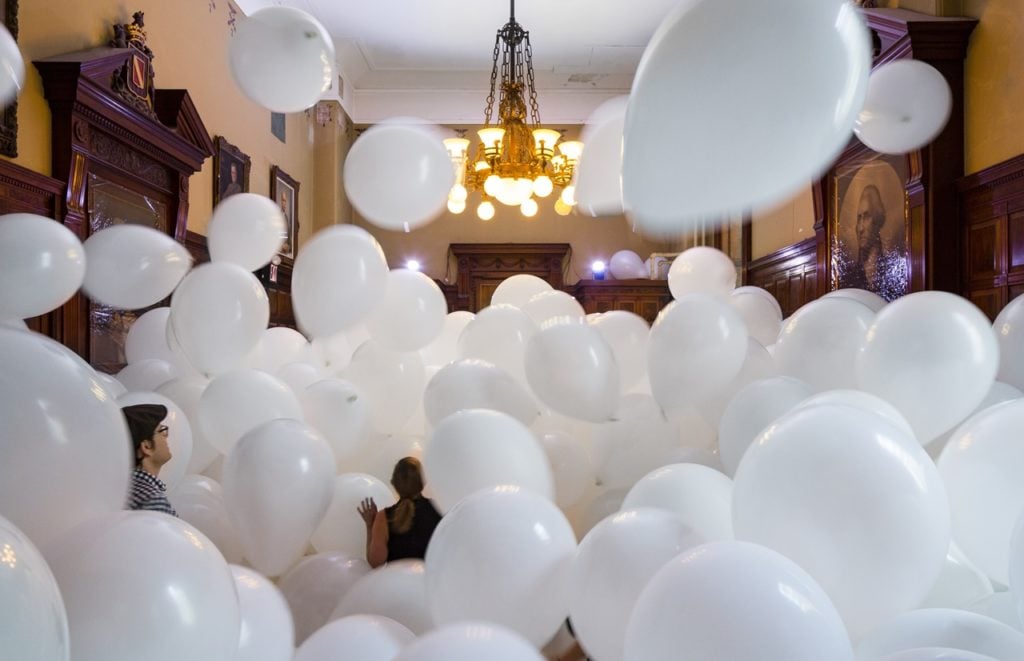
First, let’s look at the magic.

Brian Boucher

The expression “slap and tickle” comes to mind while visiting British artist Martin Creed’s new show at New York’s Park Avenue Armory.
On one hand, there’s video of people vomiting and defecating in the show, titled “The Back Door.” On the other, there’s a family-friendly balloon room that is sure to draw long lines all summer. And in the work that gave the show its name, there’s an inspired, minimal gesture that exploits the building’s gargantuan drill hall in a way that borders on the magical.
The Brits use the expression to refer to playful sex, but also, on occasion, to police brutality. Such a versatile expression echoes not only the range from bodily excretions to balloons in Creed’s show but also the great versatility of the artist’s practice, which includes media like painting, sculpture, photography, and video as well as musical performance. (He’s put out numerous albums, and his band is performing nightly all week.)
Co-curated by Tom Eccles, the director of the Center for Curatorial Studies at Bard College, in Annandale-on-Hudson, New York, and Hans Ulrich Obrist, artistic director of London’s Serpentine Gallery, the show, which spans the Armory’s whole first floor, brings together dozens of works in many of these multifarious formats, stretching back as far as the 1980s, in what the Armory calls his largest US survey to date.
First, let’s look at the magic.
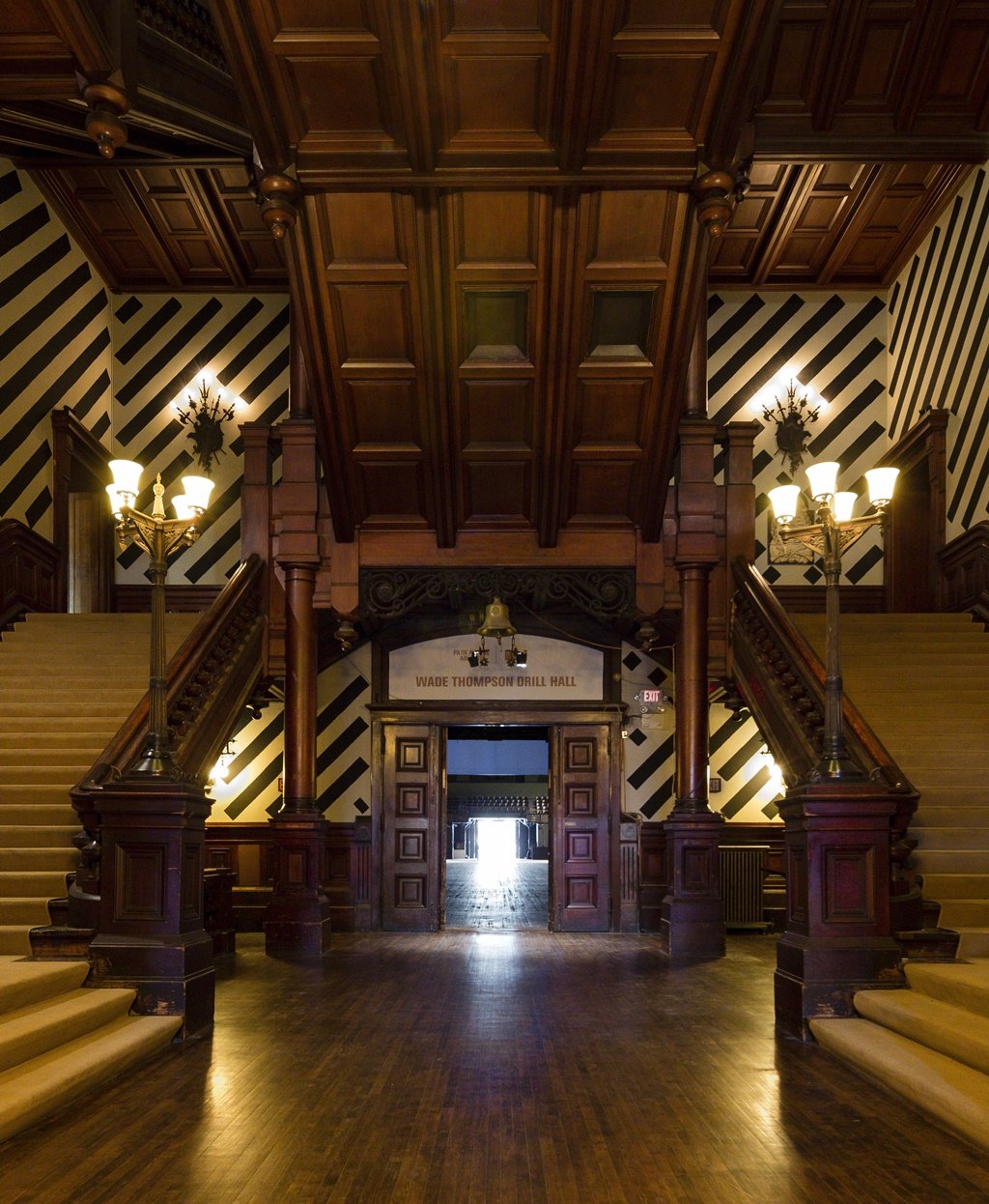
Installation view of Martin Creed at the Park Avenue Armory. Photo James Ewing, courtesy Park Avenue Armory.
The Armory’s 55,000-square-foot central room must make artists who are commissioned to create work there break out in night sweats. Creed’s principal intervention in it, Shutters Opening and Closing (2016), is sure to make them jealous.
The darkened hall is nearly empty. The rolling garage door at the back of the space, which looks out onto Lexington Avenue, periodically opens for a few seconds and then closes. This simple act turns the everyday life outside, the passing cars and pedestrians, into a high-definition filmic study on the enchantment that can be found in the banal.
In the same room, a giant video screen hangs from the ceiling. In the intervals while the door is closed, it shows silent, slow studies, all around two minutes long, of women who open their mouths to reveal colorful goo inside, suggesting sexual secrets. Among them are the psychoanalyst Anouchka Grose, the psychoanalyst Estela Welldon, and Creed’s mother, Gisela Creed. Get it? With its drab pacing and obvious psychoanalytic punch line, it can only take a backseat to the door piece, which I just kept waiting for while the short videos screened.
Though not as wondrous as the drill hall garage door, Half the Air in a Given Space (2015) is already tearing up Instagram. Fifty percent of the volume of one of the Armory’s galleries is taken up by large, white balloons; visitors are invited to walk through, and are at times completely submerged. “Every time you go to a gallery, it’s full of air,” Creed has said, and this idea is given sculptural form here. This piece will no doubt make major box office for the Armory. I’ll leave it to others to decide whether it belongs with Carsten Höller’s slide and all the other participatory artworks that are critiqued for going in for easy spectacle. I will say that for my part, I can’t say I find challenging new concepts in it, though Creed is pretty much always referred to as a conceptual artist.
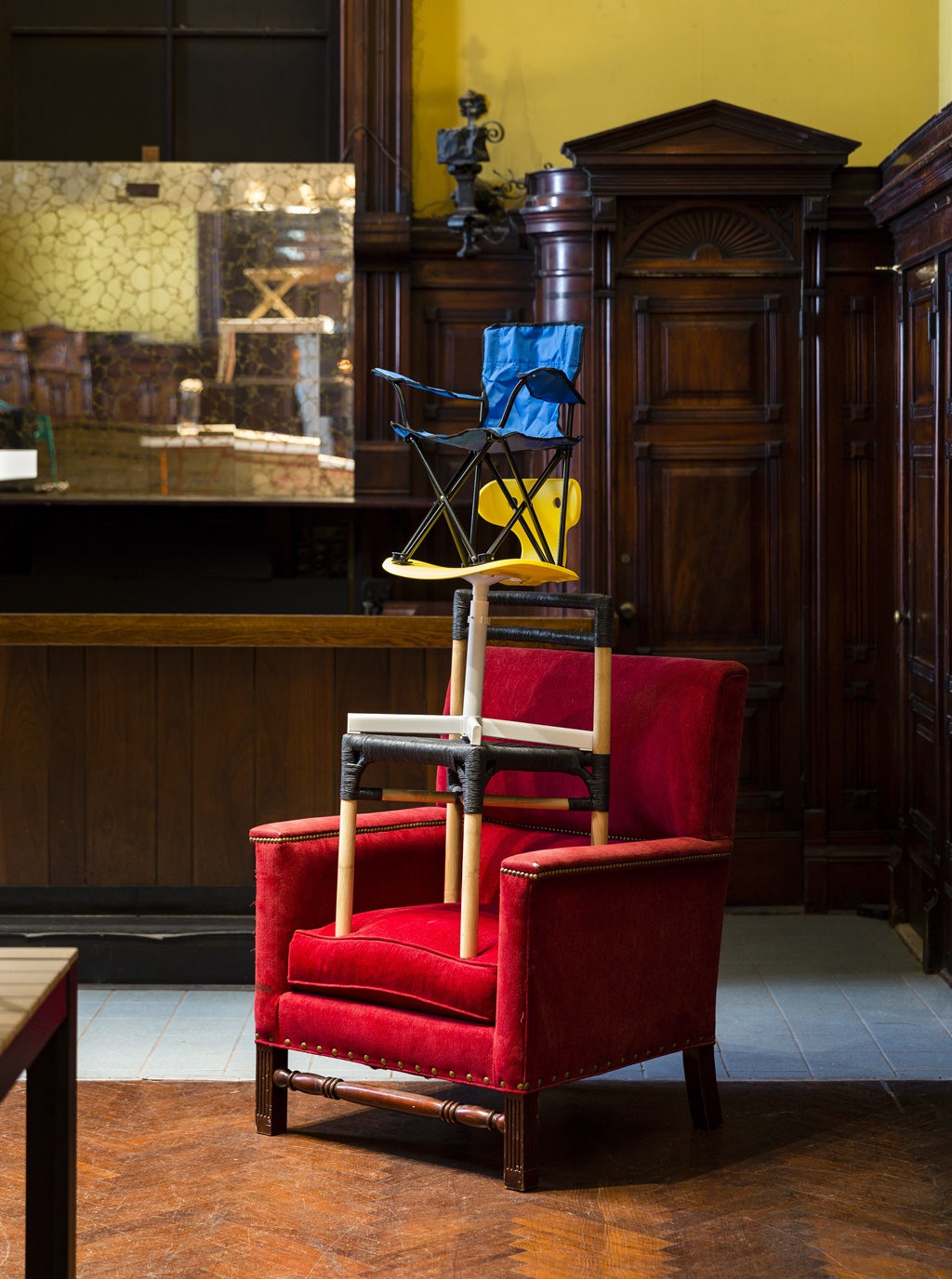
Installation view of Martin Creed at the Park Avenue Armory. Photo James Ewing, courtesy Park Avenue Armory.
Creed, 48, has been shown in museums from London to Seoul, from Pittsburgh to Moscow, since earning a degree from London’s Slade School of Art. He’s represented by powerhouse gallery Hauser & Wirth, and, also right now in New York, has a Public Art Fund–sponsored project, a giant sculpture of the word “understanding,” on view in Brooklyn Bridge Park.
His decades of effort have been plenty fruitful, as is showcased in the old-timey interiors on Park Avenue. There’s his gloriously dumb Turner Prize–winning work, The Lights Going On and Off (1996), which is just what it sounds like, and appears in a room whose back door mechanically opens and closes (that’s A Door Opening and Closing, from 1995). There are the witty sculptures in which he stacks chairs and other objects on top of one another in descending size. There’s A Sheet of Paper Crumpled into a Ball (1999) and the British version of the same work, A Sheet of A4 Paper Crumpled into a Ball (1995). In all of these, Creed surveys a world he often describes as overwhelming and finds some specific facts to arrange in specific order, in poetic, minimal gestures.
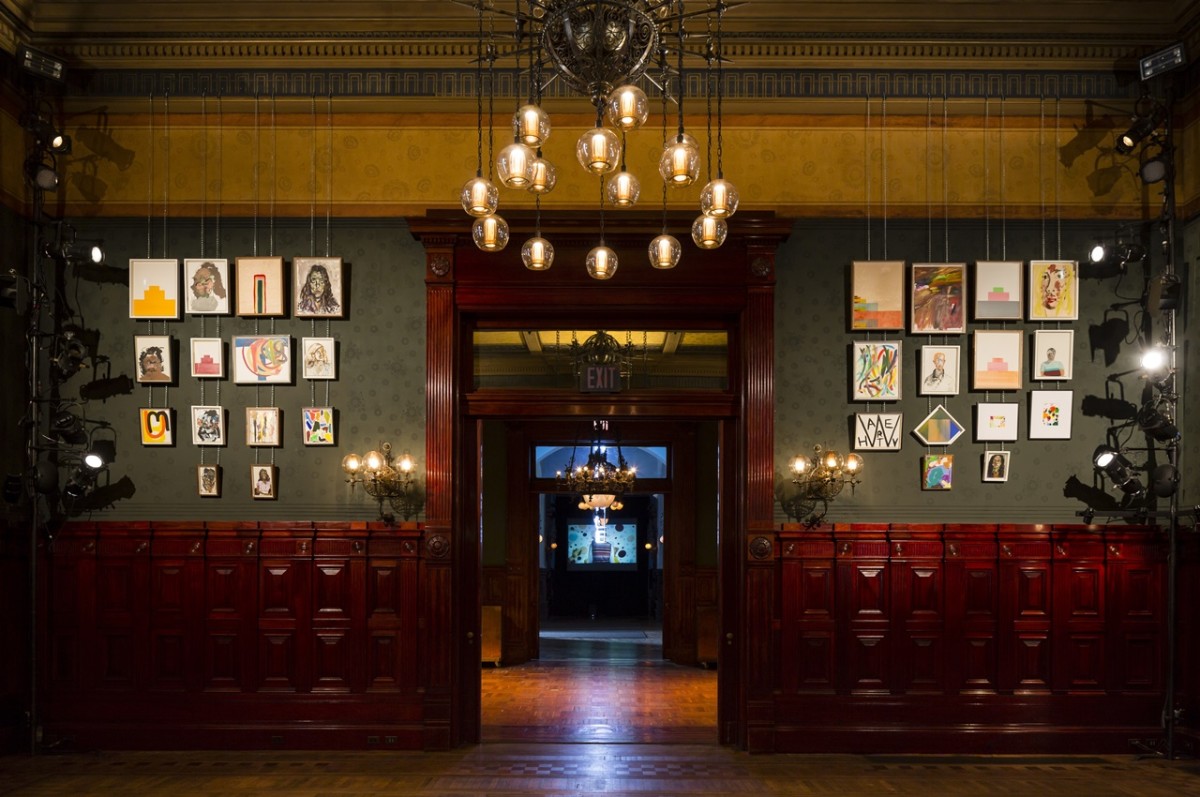
Installation view of Martin Creed at the Park Avenue Armory. Photo James Ewing, courtesy Park Avenue Armory.
Now for the earthier bits, which come in a mini-retrospective of Creed’s short video works. Everyone’s going to be talking about two of them in particular.
In one untitled video, people are shown barfing onto the floor of a pristine, empty white room. In another, a similar setting plays host to women who defecate on the floor. Creed has described vomiting as analogous to art-making, and he’s not the first to make similar comparisons: Joseph Beuys, more discreetly, described art as a “waste product” in a 1969 interview in Artforum. Artists from Piero Manzoni to Maurizio Cattelan have been less discreet.
As Eccles put it at a press conference on Tuesday, Creed, in such “shockingly honest, frank, direct” works, aims to think through what it’s like to be human, and thus vulnerable—for example, “what it’s like to have a bum.” The video Eccles was perhaps referring to shows a standing man from behind, the camera comically zooming in and out on his posterior.
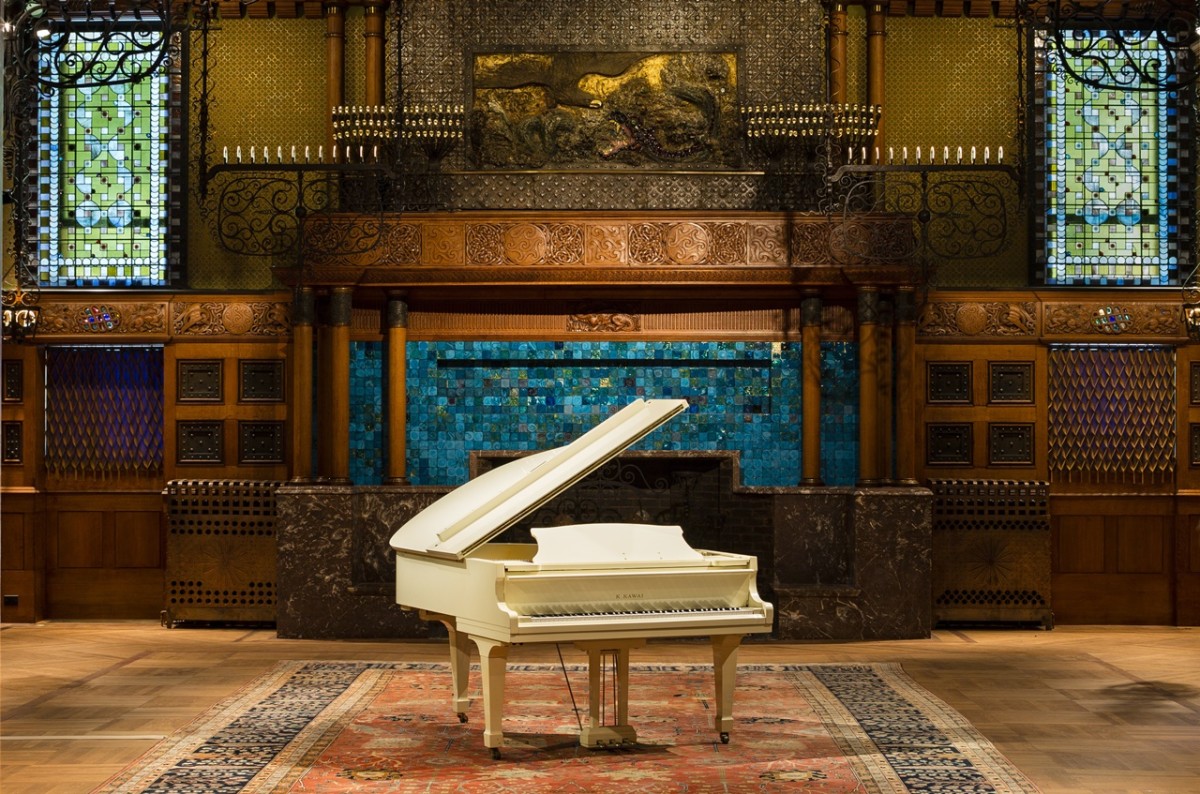
Installation view of Martin Creed at the Park Avenue Armory. Photo James Ewing, courtesy Park Avenue Armory.
In person, the artist makes quite a show of his own vulnerability, and has talked in various interviews about his tormenting self-doubt. In his remarks at Tuesday’s press conference, he made a performance of his own awkwardness. “It’s difficult to find the words, especially because I don’t know the words I’m looking for,” he said, before resorting to song; breaking out a guitar, he veered straight into Freudian cliché with a ditty about his childhood, when he couldn’t go to sleep without knowing where his mother would be.
“It’s probably all about my mother,” he joked. At moments such as this, it can get a bit too on-the-nose with Creed, and the thing about the wonderful, unifying power of expressions of vulnerability is that they work best when they’re, you know, genuine, and not so staged.
“Martin Creed: The Back Door” is on view at the Park Avenue Armory through August 7, 2016.